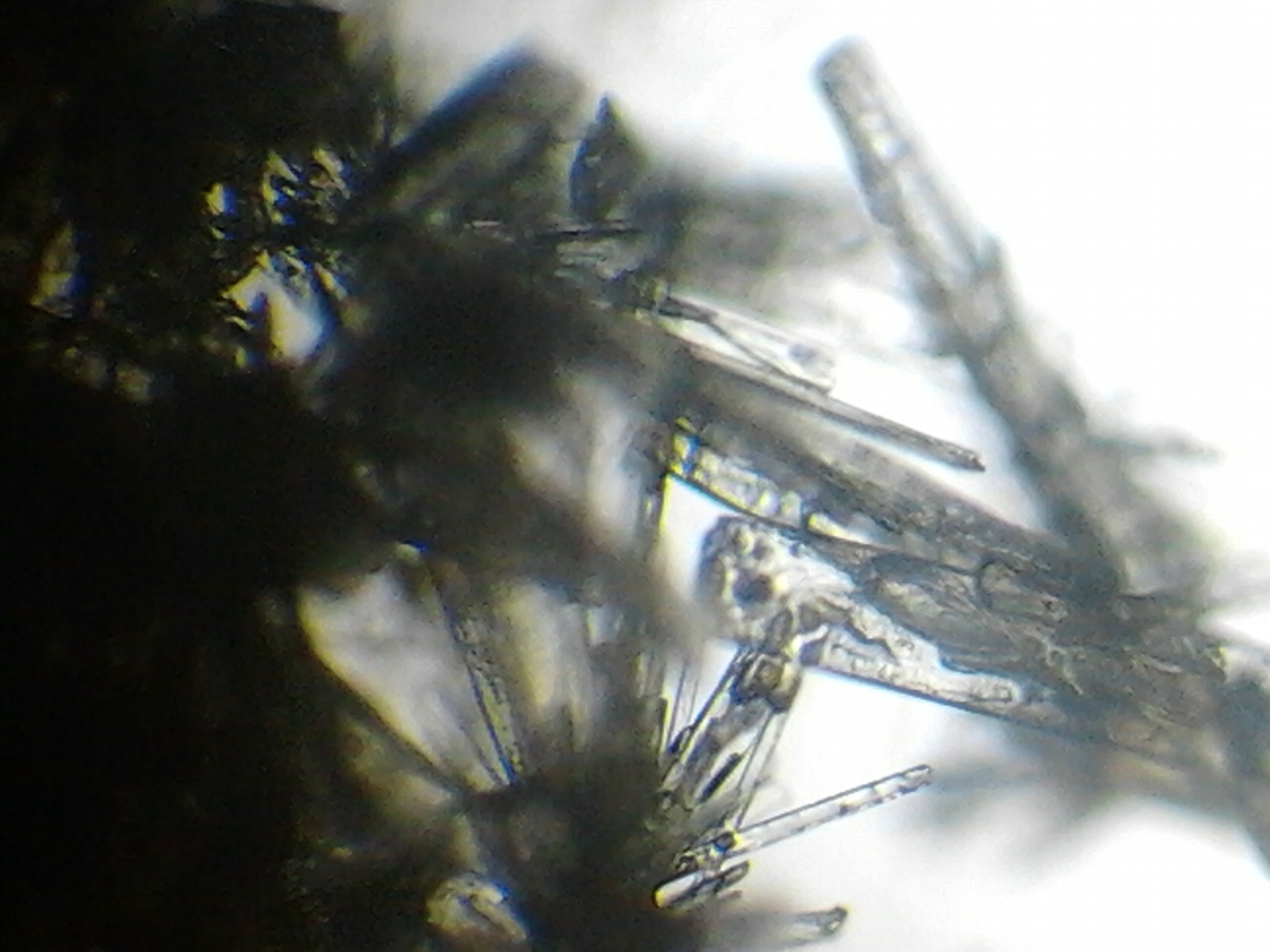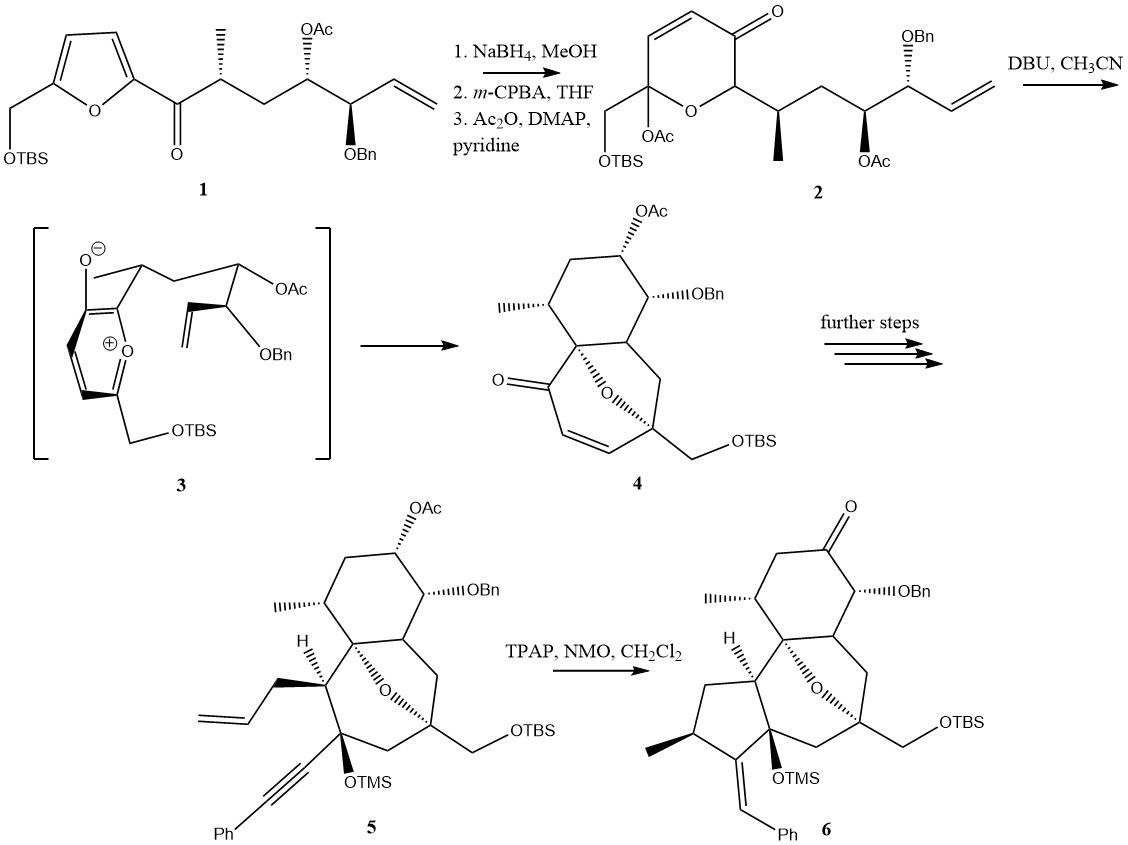|
Vanilloid
The vanilloids are compounds which possess a vanillyl group. They include vanillyl alcohol, vanillin, vanillic acid, acetovanillon, vanillylmandelic acid, homovanillic acid, capsaicin, etc. Isomers are the isovanilloids. : A number of vanilloids, most notably capsaicin, bind to the transient receptor potential vanilloid type 1 (TRPV1) receptor, an ion channel which naturally responds to noxious stimuli such as high temperatures and acidic pH. This action is responsible for the burning sensation experienced after eating spicy peppers. Endogenously generated chemicals that trigger the TRPV1 channel of the vanilloids class are referred to as endovanilloids including anandamide, 20-Hydroxyeicosatetraenoic_acid(20-HETE) ,N-Arachidonoyl_dopamine (NADA) and N-oleoyl-dopamine. : Outside the food industry vanilloids such as nonivamide are used commercially in pepper spray formulations. Other vanilloids which act at TRPV1 include resiniferatoxin Resiniferatoxin (RTX) is a natura ... [...More Info...] [...Related Items...] OR: [Wikipedia] [Google] [Baidu] |
TRPV1
The transient receptor potential cation channel subfamily V member 1 (TrpV1), also known as the capsaicin receptor and the vanilloid receptor 1, is a protein that, in humans, is encoded by the ''TRPV1'' gene. It was the first isolated member of the transient receptor potential vanilloid receptor proteins that in turn are a sub-family of the transient receptor potential protein group. This protein is a member of the TRPV group of transient receptor potential family of ion channels. The function of TRPV1 is detection and regulation of body temperature. In addition, TRPV1 provides a sensation of scalding heat and pain (nociception). In primary afferent sensory neurons, it cooperates with TRPA1 (a chemical irritant receptor) to mediate the detection of noxious environmental stimuli. Function TRPV1 is an element of or mechanism used by the mammalian somatosensory system. It is a nonselective cation channel that may be activated by a wide variety of exogenous and endogenous physical ... [...More Info...] [...Related Items...] OR: [Wikipedia] [Google] [Baidu] |
Vanilloids
The vanilloids are compounds which possess a vanillyl group. They include vanillyl alcohol, vanillin, vanillic acid, acetovanillon, vanillylmandelic acid, homovanillic acid, capsaicin, etc. Isomers are the isovanilloids. : A number of vanilloids, most notably capsaicin, bind to the transient receptor potential vanilloid type 1 (TRPV1) receptor, an ion channel which naturally responds to noxious stimuli such as high temperatures and acidic pH. This action is responsible for the burning sensation experienced after eating spicy peppers. Endogenously generated chemicals that trigger the TRPV1 channel of the vanilloids class are referred to as endovanilloids including anandamide, 20-Hydroxyeicosatetraenoic_acid(20-HETE) ,N-Arachidonoyl_dopamine (NADA) and N-oleoyl-dopamine. : Outside the food industry vanilloids such as nonivamide are used commercially in pepper spray formulations. Other vanilloids which act at TRPV1 include resiniferatoxin Resiniferatoxin (RTX) is a natura ... [...More Info...] [...Related Items...] OR: [Wikipedia] [Google] [Baidu] |
Vanillin
Vanillin is an organic compound with the molecular formula . It is a phenolic aldehyde. Its functional groups include aldehyde, hydroxyl, and ether. It is the primary component of the extract of the vanilla bean. Synthetic vanillin is now used more often than natural vanilla extract as a flavoring in foods, beverages, and pharmaceuticals. Vanillin and ethylvanillin are used by the food industry; ethylvanillin is more expensive, but has a stronger note. It differs from vanillin by having an ethoxy group (−O−CH2CH3) instead of a methoxy group (−O−CH3). Natural vanilla extract is a mixture of several hundred different compounds in addition to vanillin. Artificial vanilla flavoring is often a solution of pure vanillin, usually of synthetic origin. Because of the scarcity and expense of natural vanilla extract, synthetic preparation of its predominant component has long been of interest. The first commercial synthesis of vanillin began with the more readily available na ... [...More Info...] [...Related Items...] OR: [Wikipedia] [Google] [Baidu] |
Vanillic Acid
Vanillic acid (4-hydroxy-3-methoxybenzoic acid) is a dihydroxybenzoic acid derivative used as a flavoring agent. It is an oxidized form of vanillin. It is also an intermediate in the production of vanillin from ferulic acid. Occurrence in nature The highest amount of vanillic acid in plants known so far is found in the root of ''Angelica sinensis'', an herb indigenous to China, which is used in traditional Chinese medicine. Occurrences in food Açaí oil, obtained from the fruit of the açaí palm (''Euterpe oleracea''), is rich in vanillic acid (). It is one of the main natural phenols in argan oil. It is also found in wine and vinegar. Metabolism Vanillic acid is one of the main catechins metabolites found in humans after consumption of green tea infusions. Synthesis Oxidation of vanillin Vanillin is an organic compound with the molecular formula . It is a phenolic aldehyde. Its functional groups include aldehyde, hydroxyl, and ether. It is the primary componen ... [...More Info...] [...Related Items...] OR: [Wikipedia] [Google] [Baidu] |
Acetovanillon
Apocynin, also known as acetovanillone, is a natural organic compound structurally related to vanillin. It has been isolated from a variety of plant sources and is being studied for its variety of pharmacological properties. History Apocynin was first described by Oswald Schmiedeberg, a German pharmacologist, in 1883 and was first isolated by Horace Finnemore, in 1908, from the root of Canadian hemp (''Apocynum cannabinum''). At the time, this plant was already used for its known effectiveness against edema and heart problems. In 1971, apocynin was also isolated from ''Picrorhiza kurroa'', a small plant that grows at high altitudes in the western Himalayas. ''P. kurroa'' was used for ages as a treatment for liver and heart problems, jaundice, and asthma. In 1990, Simons et al. isolated apocynin to a pharmacologically useful level using an actively guided isolation procedure. Apocynin's observed anti-inflammatory capabilities proved to be a result of its ability to selectively pr ... [...More Info...] [...Related Items...] OR: [Wikipedia] [Google] [Baidu] |
Vanillylmandelic Acid
Vanillylmandelic acid (VMA) is a chemical intermediate in the synthesis of artificial vanilla flavorings and is an end-stage metabolite of the catecholamines ( dopamine, epinephrine, and norepinephrine). It is produced via intermediary metabolites. Chemical synthesis VMA synthesis is the first step of a two-step process practiced by Rhodia since the 1970s to synthesize artificial vanilla. Specifically the reaction entails the condensation of guaiacol and glyoxylic acid in an ice cold, aqueous solution with sodium hydroxide. Biological elimination VMA is found in the urine, along with other catecholamine metabolites, including homovanillic acid (HVA), metanephrine, and normetanephrine. In timed urine tests the quantity excreted (usually per 24 hours) is assessed along with creatinine clearance, and the quantity of cortisols, catecholamines, and metanephrines excreted is also measured. Clinical significance Urinary VMA is elevated in patients with tumors that secrete ca ... [...More Info...] [...Related Items...] OR: [Wikipedia] [Google] [Baidu] |
Homovanillic Acid
Homovanillic acid (HVA) is a major catecholamine metabolite that is produced by a consecutive action of monoamine oxidase and catechol-O-methyltransferase on dopamine. Homovanillic acid is used as a reagent to detect oxidative enzymes, and is associated with dopamine levels in the brain. In psychiatry and neuroscience, brain and cerebrospinal fluid levels of HVA are measured as a marker of metabolic stress caused by 2-deoxy-D-glucose. HVA presence supports a diagnosis of neuroblastoma and malignant pheochromocytoma. Fasting plasma levels of HVA are known to be higher in females than in males. This does not seem to be influenced by adult hormonal changes, as the pattern is retained in the elderly and post-menopausal as well as transgender people according to their genetic sex, both before and during cross-sex hormone administration. Differences in HVA have also been correlated to tobacco usage, with smokers showing significantly lower amounts of plasma HVA. See also * ... [...More Info...] [...Related Items...] OR: [Wikipedia] [Google] [Baidu] |
Isovanilloids
The isovanilloids are compounds which possess an isovanillyl group. They include isovanillyl alcohol, isovanillin, isovanillic acid, ''iso''-acetovanillon, etc. They are isomers of the vanilloids The vanilloids are compounds which possess a vanillyl group. They include vanillyl alcohol, vanillin, vanillic acid, acetovanillon, vanillylmandelic acid, homovanillic acid, capsaicin, etc. Isomers are the isovanilloids. : A number of vanilloid .... : Literature * {{Dead link, date=January 2020 , bot=InternetArchiveBot , fix-attempted=yes Phenols Phenol ethers ... [...More Info...] [...Related Items...] OR: [Wikipedia] [Google] [Baidu] |
N-Arachidonoyl Dopamine
''N''-Arachidonoyl dopamine (NADA) is an endocannabinoid that acts as an agonist of the CB1 receptor and the transient receptor potential V1 (TRPV1) ion channel. NADA was first described as a putative endocannabinoid (agonist for the CB1 receptor) in 2000 and was subsequently identified as an endovanilloid (agonist for TRPV1) in 2002. NADA is an endogenous arachidonic acid based lipid found in the brain of rats, with especially high concentrations in the hippocampus, cerebellum, and striatum. It activates the TRPV1 channel with an EC50 of approximately of 50 nM which makes it the putative endogenous TRPV1 agonist. In mice, NADA was shown to induce the tetrad of physiological paradigms associated with cannabinoids: hypothermia, hypo-locomotion, catalepsy, and analgesia. NADA has been found to play a regulatory role in both the peripheral and central nervous systems, and displays antioxidant and neuroprotectant properties. NADA has also been implicated in smooth muscle cont ... [...More Info...] [...Related Items...] OR: [Wikipedia] [Google] [Baidu] |
Vanillin2
Vanillin is an organic compound with the molecular formula . It is a phenolic aldehyde. Its functional groups include aldehyde, hydroxyl, and ether. It is the primary component of the extract of the vanilla bean. Synthetic vanillin is now used more often than natural vanilla extract as a flavoring in foods, beverages, and pharmaceuticals. Vanillin and ethylvanillin are used by the food industry; ethylvanillin is more expensive, but has a stronger note. It differs from vanillin by having an ethoxy group (−O−CH2CH3) instead of a methoxy group (−O−CH3). Natural vanilla extract is a mixture of several hundred different compounds in addition to vanillin. Artificial vanilla flavoring is often a solution of pure vanillin, usually of synthetic origin. Because of the scarcity and expense of natural vanilla extract, synthetic preparation of its predominant component has long been of interest. The first commercial synthesis of vanillin began with the more readily available na ... [...More Info...] [...Related Items...] OR: [Wikipedia] [Google] [Baidu] |
Acetovanillone
Apocynin, also known as acetovanillone, is a natural organic compound structurally related to vanillin. It has been isolated from a variety of plant sources and is being studied for its variety of pharmacological properties. History Apocynin was first described by Oswald Schmiedeberg, a German pharmacologist, in 1883 and was first isolated by Horace Finnemore, in 1908, from the root of Canadian hemp (''Apocynum cannabinum''). At the time, this plant was already used for its known effectiveness against edema and heart problems. In 1971, apocynin was also isolated from ''Picrorhiza kurroa'', a small plant that grows at high altitudes in the western Himalayas. ''P. kurroa'' was used for ages as a treatment for liver and heart problems, jaundice, and asthma. In 1990, Simons et al. isolated apocynin to a pharmacologically useful level using an actively guided isolation procedure. Apocynin's observed anti-inflammatory capabilities proved to be a result of its ability to selectively pr ... [...More Info...] [...Related Items...] OR: [Wikipedia] [Google] [Baidu] |
Resiniferatoxin
Resiniferatoxin (RTX) is a naturally occurring chemical found in resin spurge (''Euphorbia resinifera''), a cactus-like plant commonly found in Morocco, and in ''Euphorbia poissonii'' found in northern Nigeria.''Euphorbia poissonii'' in BoDD – Botanical Dermatology Database It is a potent functional analog of , the active ingredient in . Biological activity R ...[...More Info...] [...Related Items...] OR: [Wikipedia] [Google] [Baidu] |

